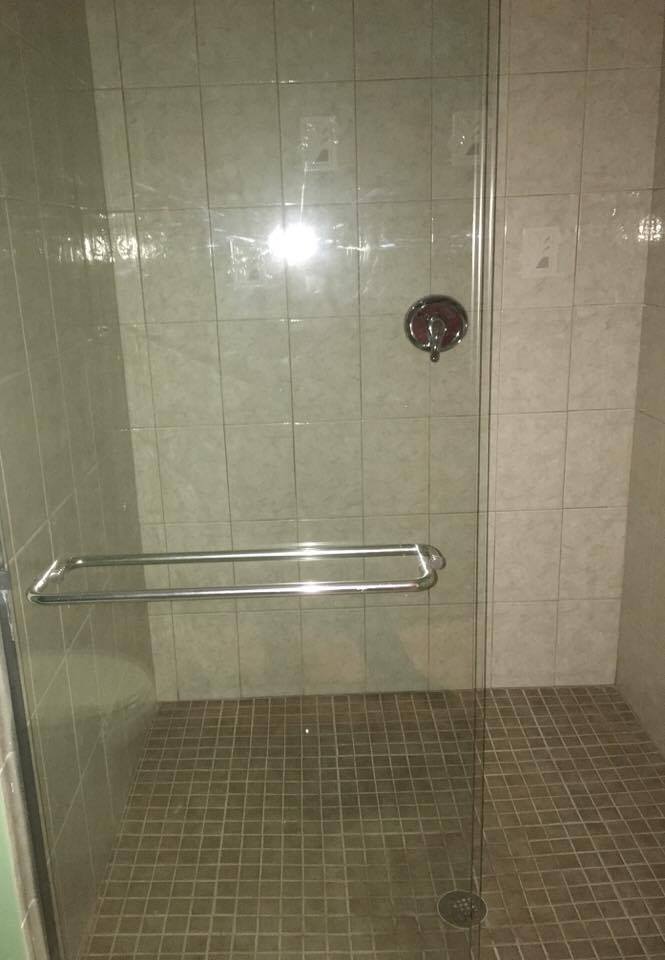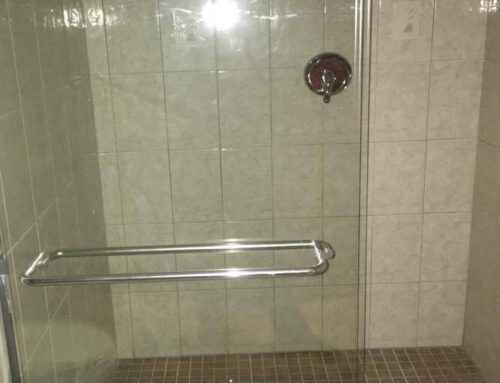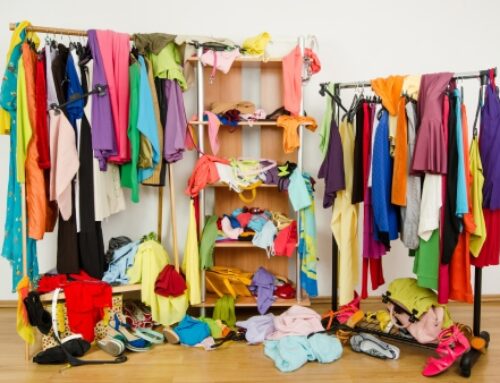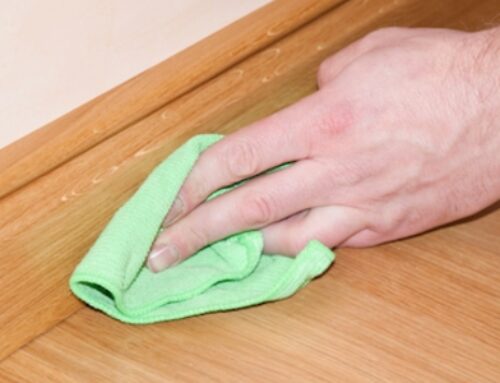So you’ve started the House Cleaning on a Saturday morning and you’re off to a good start, but you keep walking past the bathroom avoiding the knee grinding torture of cleaning that bathtub. Horror stories loom in your mind of times where scrubbing was futile only to end the bathtub cleaning a smidge better than what it was when you started, receiving not much more than ibuprofen combined with back pain in return.
It is well known that cleaning bathtubs can be difficult and tedious, but is well worth it after you reward yourself with a nice soak in a spotless tub after. In this article we’ve tried to detail how we clean our bathtubs so that we could share it with you and hopefully make your life a bit easier. By cleaning them this way with a few pointers and sheer motivation, you’ll be able to get your bathtub as clean as we do!
You will need:
- Mesh drain catcher
- Gloves
- Bleach
- Magic eraser
- all purpose cleaner
- scrub brush
- dry microfiber towel
- Toilet Bowl cleaner (yes! you read that right! Most toilet bowl cleaners contain Hydrochloric acid and if you have soap scum build up, it’s the best thing to get it off next to a putty knife)

Take note: Bathtubs are generally made of either fiberglass, acrylic, porcelain, stone, or metal. The steps will remain the same when cleaning any type of tub, however the materials could vary depending on if you have an acrylic, or fiberglass bathtub. In general, tubs made of acrylic or fiberglass scratch easier than the others.
So, if you use an abrasive scrubber, you risk leaving behind scratch marks. If you have one of those bathtubs, use a sponge or rag, which means you may need a stronger cleaner. Try borax and lemon juice; it has a little more kick than baking soda and vinegar.
- Examine your Bathtub.
You want to look for all the black and pink spots that you can find. These are usually in the corners around the top of the bathtub if you have a bath/shower, around the drain and around the over spill spout. Run your nail along the walls of your tub to decipher whether or not you have soap scum build up. (It will look like you’ve just run your nail along a block of candle wax)
- Start on the soap scum. (if you have none, move to step 3)
Use your toilet bowl cleaner and spray a minuscule line on the walls of your bathtub. Make sure you have your gloves on and use the scrub brush to scrub the walls and the floor of the bathtub. Use hot water from the spout to wash away the cleaner and soap scum.
- Spray bleach on the black and pink mold. (if you have none, move to step 4)
Once you spray bleach on the discolored spots in your bathtub, let it sit for about 2 minutes. Use scrub brush and scrub affected spots until discoloration is gone. Use hot water from the spout to wash away bleach and mold residue in the bathtub.
- Spray entire tub with all purpose cleaner (we recommend Mr. Clean)
After spraying your tub, use the magic eraser to scrub at the dark spots in your tub. These spots will be around were you stand to shower or a dark ring from where the water sits as you take a bath. With the magic eraser, it will come right up. The all purpose cleaner will also disinfect your tub which is why we choose to use it last. Use hot water from the spout to wash away cleaner and dirt.
- Dry your Bathtub.
Empty your mesh drain catcher. Use the microfiber towel to dry your tub. This is important because water sitting in spots on your tub can create more mold and water spots. After drying, examine your tub again. Notice how all your build up is gone and how easy it will be to keep clean after this initial cleaning.
- Shine your faucets.
Depending on the type of faucets you have you may be able to use plain water or your all purpose cleaner. you can use your microfiber towel to do so.
A few trusted bathtub cleaning tips and tricks:
– You can use Barkeepers friend for lime scale build up (it looks like green and yellow cement around drain and spouts)
– If you have tile walling around your tub for the shower, we recommend scrubbing the discolored grout with your scrub brush and bleach like in step 3.
– Always work top to bottom, because of gravity, dirt falls.
– Don’t forget to wipe the outside of your tub with the microfiber towel, dust tends to gather there from the humidity.
– Sometimes there will be black mold in the caulk. If that is the case, the only way to get it out is to re-caulk your bathtub.
Other trusted methods of cleaning Bathtubs:
Cleaning a tub with vinegar and baking soda
Step 1: Remove all soaps, rags, body wash and shampoos. Use hot water to rinse away any excess soaps or drips of shampoo. You want to start on the layer of grime that is the source if it needing a good cleaning. (The stuff you can’t just wipe away). Be sure to wet the entire tub very thoroughly. Especially on the stains and mildew.
Step 2: Sprinkle baking soda all over the tub, use a little extra on the spots that have stains and mildew. Baking soda is a great cleaner used for cleaning a variety of different things but it can’t do the job all on it’s own. Use a grout or scrub brush to scrub the tub to make the baking powder a paste. Then scrub the day lights out of it. Be sure to get the corners and dark spots very well.
Step 3: After scrubbing the baking soda into your tub, it’s time to break out the vinegar. You may want to wear gloves because the smell of vinegar can stick to you. Dip your scrub brush into the vinegar and continue to scrub the tub. Vinegar is not only a disinfectant but will help activate the baking soda and get a deeper clean. Be sure to scrub especially hard on the mildew and dark spots.
Step 4: Time to rinse away the vinegar and paste! The easiest way to rinse everything is to take a bucket and fill it with hot water. While rinsing, be sure to check for any spots that are still dark, like around the drain, where your soap bottles sit or in the corners.
Step 5: Time to touch up all those leftover dark spots. Start off the same way as the steps above. Apply the baking soda and vinegar. Once again, the scrubbing is going to play a big part in this step. You can also add a little dish soap to help lift any hard to get spots. If there happens to be any mildew along your caulk line that is a dark black color, the only way to get rid of that is to re caulk the tub. You could also try bleach like OxyClean or hydrogen peroxide. Both work well and are kind to the environment.
Natural Tub Cleaners
If you don’t want to have any chemicals in your home or on your tub, try these natural tub cleaning alternatives below:
Sodium Bicarbonate – More commonly known as baking soda, or Nature’s greatest miracle…just kidding, but it’s probably up there. Baking soda has so many uses – it deodorizes, whitens, disinfects, you can cook with it, and tons of others. Chances are, you probably already have some baking soda sitting in your fridge. If you’re going to try cleaning with it buy a new one so that you get the most effectiveness out of it. Baking soda has whitening effects so it’s great for using on many different surfaces like showers, tile floors, grout, toilets and sinks. So, go to town with it, it’s extremely cheap too so you don’t have to hold back. If you don’t use it all cleaning, I’m sure you’ll find something else you can use it for.
Vinegar – Vinegar disinfectants, it’s cost-effective, simple to use, and it works. You can combine it with baking soda and relive middle school science class as you watch it bubble away light dirt and grime. Not as exciting to watch as that middle school volcano project, but still fun, in it’s own adulting way. Vinegar’s available at pretty much any grocery store, Walmart or even online.
The Sweat of One’s Brow – As anyone knows who’s ever fought with a tough stain that just wouldn’t come out, there’s no substitution for blood, sweat and tears. However, blood, sweat and tears work sometimes and sometimes the chemical compound that caused the stain could care less. However, aside from any really bad stuff staining your home, with rags, vinegar, baking soda and vigorous polishing you’ll be able to clean most small, surface level grime and buildup off.
Identifying and Removing Different Types of Bathtub Stains:
Mild Stain Removal Process:
For mild stains and heavy dirt buildup follow these quick and easy steps:
- Get some white vinegar and warm water and mix them equally in a spray bottle.
- Grab your miracle-working baking soda and sprinkle it all over the tub, especially in those corners where dirt and grime loiter.
- After sprinkling the tub with baking soda, grab your vinegar spray and spray it over the baking soda and watch it bubble. Warning: If you don’t like the smell of vinegar then this might not be the solution for you. The baking soda will help dampen the smell, but it’s still pretty strong.
- Let the mixture bubble for 15 minutes and then grab a soft sponge or cloth and scrub it down until it starts to become pasty.
- After you’ve scrubbed the solution to a paste, let it sit for another 15 minutes and then wipe it all off, rinse it off and you’re done!
Removing Tough Bathtub Stains:
Got some stubborn stains that eat vinegar and baking soda for breakfast? We’ve got you covered. Follow these 3 simple steps below to get them out.
- Here we go again with the middle school science class solutions. Grab some hydrogen peroxide and mix it with, you guessed it, baking soda. You’ll want to make it into a paste by using a 2 to 1 mixing ratio: 2 parts baking soda to 1 part hydrogen peroxide. For example, if you’re going to use cups – you’d add 2 cups of baking soda and 1 cup of hydrogen peroxide.
- Rub the paste excessively on the stain. Cover the stain with your homemade paste and then just let it sit for a while, 45minutes to an hour – depending on how bad the stain is.
- Check the paste’s progress on the stain by wiping off a small section and rinsing it off to see if it’s done it’s magic yet. If it hasn’t just apply more paste and then rinse and repeat until it’s gone!
Hard Water Bathtub Stain Removal:
Calcium deposits and other hard water stains can look like they’re there to stay, however, in reality, they are actually pretty easy to get rid of.
- First, fill a small cup or bowl with vinegar then grab some paper towels and dip them in that stinky cup of vinegar
- Then, you’ll grab the the soaked paper towels – using gloves so that the stench doesn’t stick to your hands long after you’re done cleaning – and apply them directly onto the stained sections.
- Next, give yourself a breather, and let the paper towels sit there for at least 60 minutes.
- Last, grab your homemade paste and scrub the deposits using your paste, then rinse it all off and step back and admire your work. Smile, you deserve it.
Removing Bathtub Rust Stains:
If Calcium deposits don’t seem impossible, then rust definitely does, but don’t be discouraged because if we didn’t have a solution, we wouldn’t include it in this post. So, here we go, follow these steps to get that ugly rust out. You’ll need a few more supplies for rust, but nothing you can’t find at your local Walmart, or grocery store, or on Amazon.
First, head to the store, or fire up your Amazon Fresh, if it’s available in your city, and order:
– Borax
– Lemons
Once you have those two items you’re ready to get started:
- First, use your borax to powder the entire rusted area.
- Then, cut the lemon in half. Use the cut side of the lemon to rub the stain until it begins to get pasty.
- After you’ve done this to all of the rust stains, let the paste that formed sit there for 15-20 minutes.
- Spoiler alert, it’s the same ending as most cleaning processes – wipe it all off and rinse it off. If it’s not as shiny as you’d like it, or you can still see some of the rust, give it another go and let the borax and lemon juice do their magic a bit longer.
General Do’s and Don’ts
- DON’T use steel wool or really rough scrubbers with strong cleaning detergents when you’re cleaning a tub. If you do, whatever you just cleaned will, indeed, be really
- clean, however it’ll also be ruined with scratches galore and probably won’t get the intended satisfaction you were looking for when you started cleaning it. Use softer rags, scrubs and brushes to ensure you don’t ruin any of your favorite items.
- DON’T EVER, EVER EVER, NEVER MIX CLEANING PRODUCTS. Certain chemicals, when combined can create toxic fumes, burn your skin and can even be deadly if inhaled long enough. For example, if you mix certain toilet bowl cleaners that have hydrochloric acid in them, with bleach, you can actually create Chlorine Gas, which has been used in war, which tells you how lethal it can be.
- DON’T ever use chemicals without the proper protection – some gloves, a long sleeve, pants and maybe even glasses for good measure. You also don’t want to be spraying chemicals in a closed, small room, even if they’re not toxic, they’re not good to inhale in a small space and can create some bad side effects – nausea, headaches, fainting. So, make sure it’s well ventilated wherever you’re cleaning.
- DON’T wear your favorite t-shirt, or your Sunday’s best. Remember, hydrogen peroxide and bleach will ruin your fabrics, so be sure to move your bath towels, and wear clothes you don’t mind ruining when cleaning with either of these bad boys. Always make sure to rinse bleach and peroxide completely off of any surfaces you were using them on.
So that’s it, that’s all we got. Hopefully, this helps you in your journey to keep your bathtub and your home looking amazing. Keeping your bathtub clean is an ongoing task, but will ultimately make your tub last longer and look nicer. As with any other area or item in your home, the more often you maintain it the less you have to clean it. If you just keep an eye on your tub, don’t let build up get thick, or allow spots or stains to go un-wiped, you’ll make it a lot easier for yourself to keep it looking sparklingly beautiful. A few things to remember – if you can, after each use rinse it with hot water to keep any soap scum from drying and sticking around, making it much more difficult to get off later on. Also, after you rinse it, use a nice microfiber towel to dry it off and be sure to dry off any excess moisture on the tub – this will help prevent any soap scum, mildew and grime buildup. It seems a tedious task, but think of it as investment. Invest 2 minutes today so that you don’t have to invest 2 hours tomorrow. And of course, if it gets out of control and you don’t want to invest the time, feel free to give us a call and we’ll get it back to looking new again!




